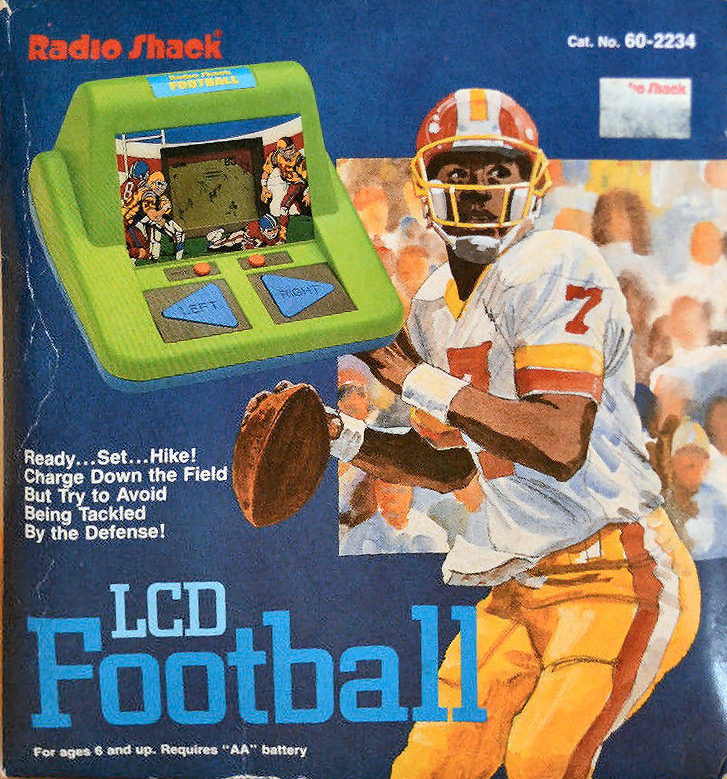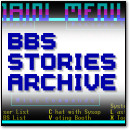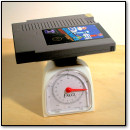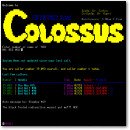Archive for the 'Computer History' Category
[ Retro Scan of the Week ] Tandy Memorex VIS
Monday, March 9th, 2015 CD-ROM ON YOUR MOTHER LOVIN’ TV!!
CD-ROM ON YOUR MOTHER LOVIN’ TV!!
Back in 2009, I made a list of the worst video game systems of all time for PC World, and the Tandy Memorex Video Information System (1992) was #2 on the list.
Six years later, I am not fond of dishing out bad vibes toward any game console. But the VIS was indeed an underwhelming commercial product.
And honestly, calling the VIS a video game console is a stretch. As more of a multimedia appliance than a straight up “video game system,” its lineage lay half-way between game machine and general purpose PC. Its designers intended it to run educational software as frequently as games.
For fans of odd an interesting systems, the VIS definitely stands out. Under the hood, it sported a modified PC architecture based on an Intel 286 CPU and a custom embedded version of Windows called “Modular Windows.” In addition, the VIS allowed storing data on removable memory cards that plugged into the front of the console (a feature that, in game consoles, arrived second only to the Neo Geo, I believe).
Of course, ever since I saw this section of a 1995 Tiger Software catalog (Tiger had apparently bought up a clearance stock of the machines — see also this scan of the Jaguar CD in a Tiger catalog), I wanted a VIS regardless of its faults. While I have used them before — including some in-store demos at Radio Shack — I still do not have one in my collection.
Discussion Topic of the Week: Did you own any CD-based game consoles from the multimedia console era? (i.e. CD-i, VIS, 3DO, CDTV, Jaguar CD)
[ Retro Scan of the Week ] Playing the Atari 800
Monday, March 2nd, 2015[ Retro Scan of the Week ] Axiom Printer Card
Monday, February 23rd, 2015Ah, the good ole days when you had to pay $535 (that’s $1,744 in today’s dollars) for the privilege of merely being able to hook a printer to your home computer. What can I say — it was a useful feature.
My first computer, an Apple II+, came equipped with a Grappler+ printer card (from the previous owner), although I can’t recall ever using it. Instead, I printed school reports by that time from whichever family MS-DOS machines we had at the time, each of which included a built-in parallel port for printer use.
What a great day it was when I switched from a noisy dot matrix printer to the that awesome Canon Bubblejet we had. Silent printing! And the day we got our first full-color photo capable HP inkjet printer around 1996. It was pretty low resolution, but still amazing.
Today, I don’t print much. I have a color laser copier in service to reproduce scanned documents (in lieu of a copy machine) in case I need a hard copy of something — usually a form or contract — to mail.
Discussion Topic of the Week: Do you regularly print anything from your computer these days? What do you print?
[ Retro Scan of the Week ] TRS-80 Model 4
Monday, February 9th, 2015The Glorious, Colorful World of Radio Shack Toy and Game Box Art
Friday, February 6th, 2015 After 94 years in business, it is likely that Radio Shack will soon be no more. And sadly, it has taken the impending death of Radio Shack for me to realize how absolutely ingrained its products have been in my life.
After 94 years in business, it is likely that Radio Shack will soon be no more. And sadly, it has taken the impending death of Radio Shack for me to realize how absolutely ingrained its products have been in my life.
As the son of an electronics engineer living in the US, our home growing up held at least five Radio Shack products per room (or those of its related brands: Tandy, Realistic, Optimus, Archer, or Micronta).
I am not joking or exaggerating. I could go through my parents’ house today and fill a moving van with that stuff: speakers, tapes, radios, hi-fi receivers, turntables, headphones, microphones, clocks, intercoms, outlet timers, telephones, cables, wires, adapters and more.
It’s almost absurd. My first IBM compatible PC was a Tandy 1800HD laptop. My first cassette recorder, microphone, telephone, cordless telephone all came from Radio Shack. My first kiss…well, a Radio Shack robot, of course.
And who can forget the batteries. The batteries!
 Above and beyond all that were the games, the toys, the amusements. The Armatrons and Cosmic Fire Away 1000s. Pocket Blackjack, electronic chess, Pocket Repeat, RC cars, tiny kid DJ stations, microphone FM transmitters, electronic coin banks, joysticks, talking alarm clocks (Dare I add the Tandy 1000 series and the TRS-80 Color Computer). The list is endless, I tell you.
Above and beyond all that were the games, the toys, the amusements. The Armatrons and Cosmic Fire Away 1000s. Pocket Blackjack, electronic chess, Pocket Repeat, RC cars, tiny kid DJ stations, microphone FM transmitters, electronic coin banks, joysticks, talking alarm clocks (Dare I add the Tandy 1000 series and the TRS-80 Color Computer). The list is endless, I tell you.
In honor of the foundering electronics retailer, I pulled together a slightly massive collection of Radio Shack toy and game box art from the late 1960s up to the early 2000s. For good measure, I threw in a handful of non-toy product boxes as well (such as one for a Zack Morris-sized cell phone and a pocket TV set).
As you look through them below, I have but one question to ask:
How many of these have you owned or played?
[ Continue reading The Glorious, Colorful World of Radio Shack Toy and Game Box Art » ]
[ Retro Scan of the Week ] Kodak Photo CD
Monday, February 2nd, 2015 Because the best place to look at photos has always been your TV set
Because the best place to look at photos has always been your TV set
In September 1990, Kodak announced a brand new system for storing and viewing photographs: Photo CD. At a time when Compact Discs represented the vanguard of consumer electronics technology, Kodak capitalized on the excitement by blending digitized photos with a custom CD format.
Kodak designed that format for viewing through special a Kodak CD Player device (think DVD player for still photos) that hooked to a standard TV set. Using such a player, one could view the digitized photos via a virtual slideshow.
It would not be until August 1992 until Kodak finally launched the system, releasing its first Photo CD player and beginning production of Photo CD discs for customers.
With a base image resolution of 512 x 768, Photo CD was far from an archival medium. It tried to offer convenience, but instead ended up adding needless cost and encumbrance to the photo viewing process. In an era before most people were equipped to view, edit, or print digital photos from a PC, the fact that the photos came in an electronic format did not add anything notable to the experience. Predictably, adoption of the Photo CD system never gained much steam. (Wikipedia’s article on Photo CD has some pretty good additional analysis of why Photo CD never took off.)
I personally remember encountering a Kodak Photo CD player in either a photography store or a Radio Shack as a kid. I thought it was amazing — your own photos on a TV set! But my dad, an experienced photographer, never bought into the system.
P.S. For more CD history, check out my Compact Disc 30th Anniversary article that I wrote back in 2012.
Discussion Topic of the Week: Did you ever use the Kodak Photo CD service or own a Photo CD player?
[ Retro Scan of the Week ] HP’s First Handheld Computer
Monday, January 19th, 2015 It’s a lot like an HP-11C, but freakin’ huge
It’s a lot like an HP-11C, but freakin’ huge
Plenty of companies experimented with pocket and handheld computers in the early 1980s. Among them we must count HP, which introduced its HP-75C in 1982.
I peronally own an HP-75D (the successor model of this machine) that allows use of a bar code wand. I bought it on eBay around 2000, messed around with it a few times, and I think it’s been sitting in a box or a closet since. I couldn’t get into it, for some reason, like I could my TRS-80 Pocket Computer. Perhaps it’s time to revisit the 75D and try again — if it still works.
Still, I have a soft spot for the HP-75 series because it features similar industrial design as my beloved HP-11C calculator, which I’ve been using since middle school. RPN for the win!
Discussion Topic of the Week: Are you a fan of HP calculators? Which model is your favorite?
—
See Also: BASIC in your Pocket (RSOTW, 2009)
See Also: Asimov’s Pocket Computer (RSOTW, 2011)
See Also: Sharp Pocket Computer (RSOTW, 2013)
See Also: Quasar Pocket Computer RSOTW, 2014)
[ Retro Scan of the Week ] Connectix VideoPhone
Monday, December 29th, 2014 Even black and white was amazing once
Even black and white was amazing once
Once upon a time, companies tried to achieve video phone calls using non-networked, proprietary point-to-point devices such as the AT&T VideoPhone 2500 (RSOTW, 2010) — almost all of which utilized traditional telephone lines or ISDN.
Then the Internet came along and blew the field wide open. Suddenly, video chat could happen over any data transfer medium that supported TCP/IP, and it could be routed around the world to any node on the Internet. Connectix’s VideoPhone software (circa 1995) was one of the first consumer video chat products to take advantage of the Internet. Using the software and the company’s QuickCam digital camera (arguably the world’s first webcam), folks could video conference all over the world — albeit in black and white.
For more on the history of video phones and video chat, check out this piece I created for Technologizer back in 2010.
Discussion Topic of the Week: When was the first time you ever made a video call or did video chat?
[ Retro Scan of the Week ] A PreComputer Christmas
Monday, December 22nd, 2014 Christmas morning wouldn’t be the same without a PreComputer Power Pad
Christmas morning wouldn’t be the same without a PreComputer Power Pad
I’m a big fan of educational, semi-toy computers like the VTech PreComputer Power Pad (seen here in his scan from the 1994 JCPenney Christmas Catalog) because historians and collectors alike often completely overlook them in study of computer history.
I’ve previously written about the much more famous VTech Pre Computer 1000 and even did a slideshow on kids’ computers for PCWorld back in 2011.
I don’t have a Power Pad at the moment, but I do have a few other educational computers, including some featured in that slideshow. My favorite is probably the VTech I.Q. Unlimited or the Tiger Learning Computer. But we’ll save those for another day.
Discussion Topic of the Week: Did you ever own any educational or kids’ computers? Tell us about them.









